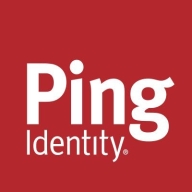


ForgeRock and IBM Security Verify Access are two leading products in identity and access management. ForgeRock has the upper hand in pricing and support, while IBM Security Verify Access stands out due to its extensive features, making it a preferred choice for users willing to invest for advanced capabilities.
Features: Users praise ForgeRock for its scalability, integration capabilities, and ease of deployment. IBM Security Verify Access receives high marks for its robust security features, flexibility, and comprehensive security solution.
Room for Improvement: ForgeRock users suggest improvements in documentation, customization options, and support. IBM Security Verify Access users point out the need for a simpler configuration process, better mobile support, and usability enhancements.
Ease of Deployment and Customer Service: ForgeRock users appreciate its straightforward deployment model but seek better customer support. IBM Security Verify Access is considered more complex to deploy but benefits from strong customer service, making it favorable for larger enterprises.
Pricing and ROI: ForgeRock is generally viewed as more cost-effective initially, offering a quicker ROI. IBM Security Verify Access, while perceived as expensive, promises substantial long-term benefits, justifying the initial investment given its comprehensive feature set and reliability.
| Product | Market Share (%) |
|---|---|
| Omada Identity | 3.1% |
| ForgeRock | 4.3% |
| IBM Security Verify Access | 1.2% |
| Other | 91.4% |



| Company Size | Count |
|---|---|
| Small Business | 8 |
| Midsize Enterprise | 3 |
| Large Enterprise | 41 |
| Company Size | Count |
|---|---|
| Small Business | 13 |
| Midsize Enterprise | 4 |
| Large Enterprise | 13 |
| Company Size | Count |
|---|---|
| Small Business | 3 |
| Midsize Enterprise | 1 |
| Large Enterprise | 5 |
Omada Identity is an identity governance and administration (IGA) solution designed to help organizations manage and secure digital identities and access across their IT environments. It focuses on enhancing security, compliance, and efficiency by automating identity management processes.
Omada Identity offers a robust set of features that streamline identity lifecycle management, access governance, and compliance reporting. It integrates with a wide range of IT systems, applications, and data sources, providing a centralized platform for managing user identities and access rights. The solution enables organizations to enforce security policies, ensure regulatory compliance, and reduce the risk of unauthorized access.
What are the critical features of Omada Identity?
What benefits or ROI items should users look for in the reviews when evaluating Omada Identity?
Omada Identity is widely adopted across various industries, including healthcare, finance, and manufacturing. In healthcare, it helps protect patient data and comply with regulations like HIPAA. In finance, it ensures compliance with SOX and other financial regulations. In manufacturing, it secures access to sensitive production data and intellectual property.
Pricing and licensing for Omada Identity are typically based on the number of users and the specific features required. Customer support is available through various channels, including online resources, support tickets, and professional services for implementation and customization.
In summary, Omada Identity is a comprehensive IGA solution that enhances security, compliance, and efficiency in managing digital identities and access.
ForgeRock is a comprehensive open-source identity and access management solution designed to meet the unique needs of your users and workforce. With ForgeRock you can orchestrate, manage, and secure the complete lifecycle of identities in any cloud or hybrid environment. ForgeRock allows you to set up bot detection, identity proofing, and risk-based authentication.
With ForgeRock, you can define access policies and automate the management of the identity lifecycle all from a central, easy to use, and graphical dashboard. ForgeRock Access Management allows you to build safe authentication using options like passwordless and usernameless logins, single sign-on, biometrics, contextual analytics, and behavioral authentication. When threats appear, you can swiftly change how your users access your most sensitive applications and provide users with secure access to the applications, systems, and resources they need on demand.
ForgeRock Benefits and Key Features
Reviews from Real Users
ForgeRock stands out among its competitors for a number of reasons. Two major ones are its robust identity and access tools and its being easy to manage and scale with one central dashboard.
PeerSpot users note the effectiveness of these features. A technology solutions leader at an outsourcing company writes, “We need it for multiple clients, multiple implementations. Not all of them are necessarily a multi-tenant solution. We need a very versatile solution that can do a lot of work, but from a single instance that we can centralize authentications and we don't duplicate the efforts and that's where ForgeRock seems to do better.”
Mohamed B., a cyber security consultant at a tech company, writes, "Their access management solution, OpenAM, is most valuable because it meets the needs of a lot of users. ForgeRock secured our system so that it is accessed only by authorized people, and it implemented the SSO."
IBM Security Verify Access is a complete authorization and network security policy management solution. It provides end-to-end protection of resources over geographically dispersed intranets and extranets.Provides a wide range of built-in authenticators and supports external authenticators.Provides permit and deny decisions for protected resources requests in the secure domain through the authorization API.Manages secure access to private internal network-based resources by using the public Internet's broad connectivity and ease of use with a corporate firewall system.
We monitor all Identity Management (IM) reviews to prevent fraudulent reviews and keep review quality high. We do not post reviews by company employees or direct competitors. We validate each review for authenticity via cross-reference with LinkedIn, and personal follow-up with the reviewer when necessary.